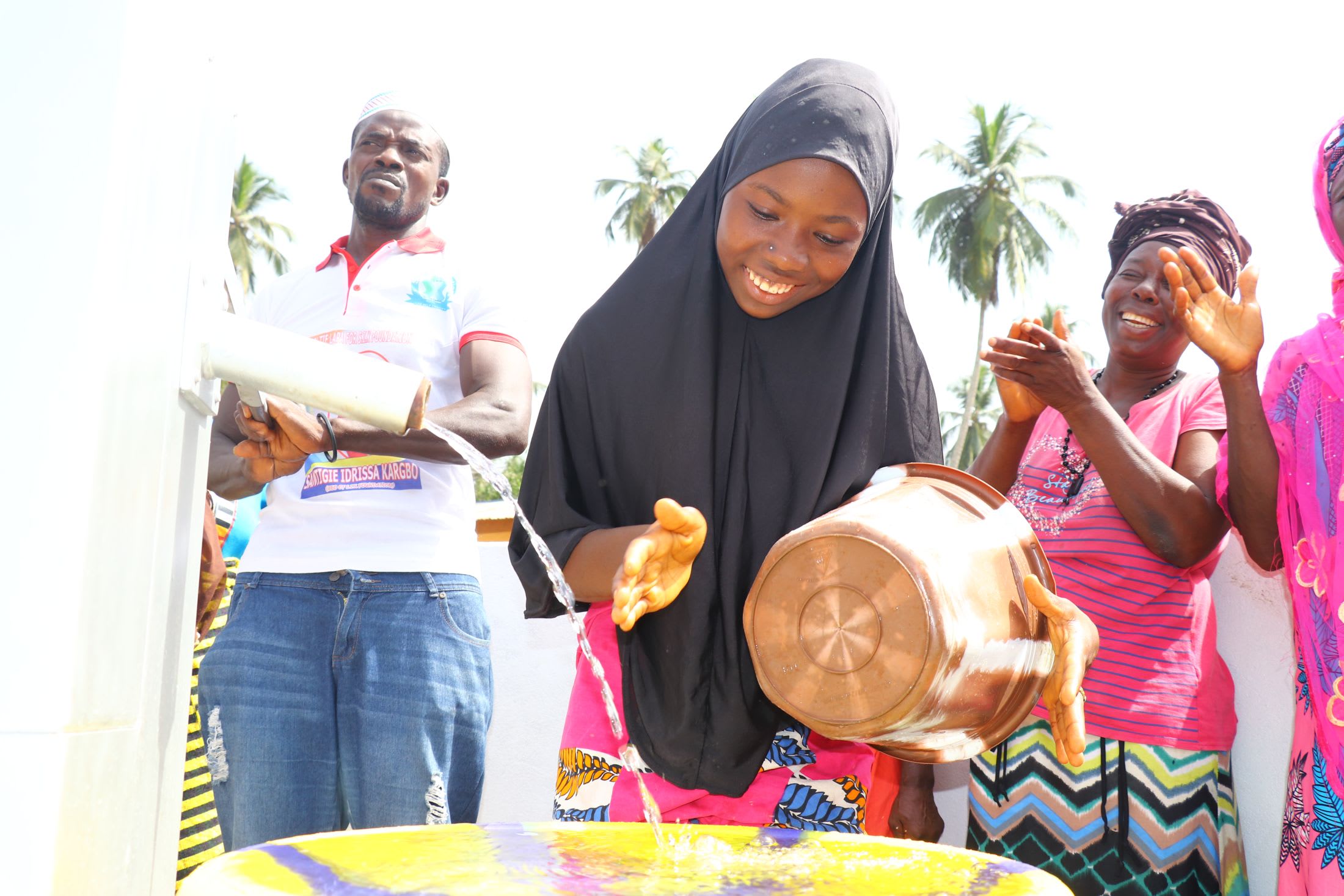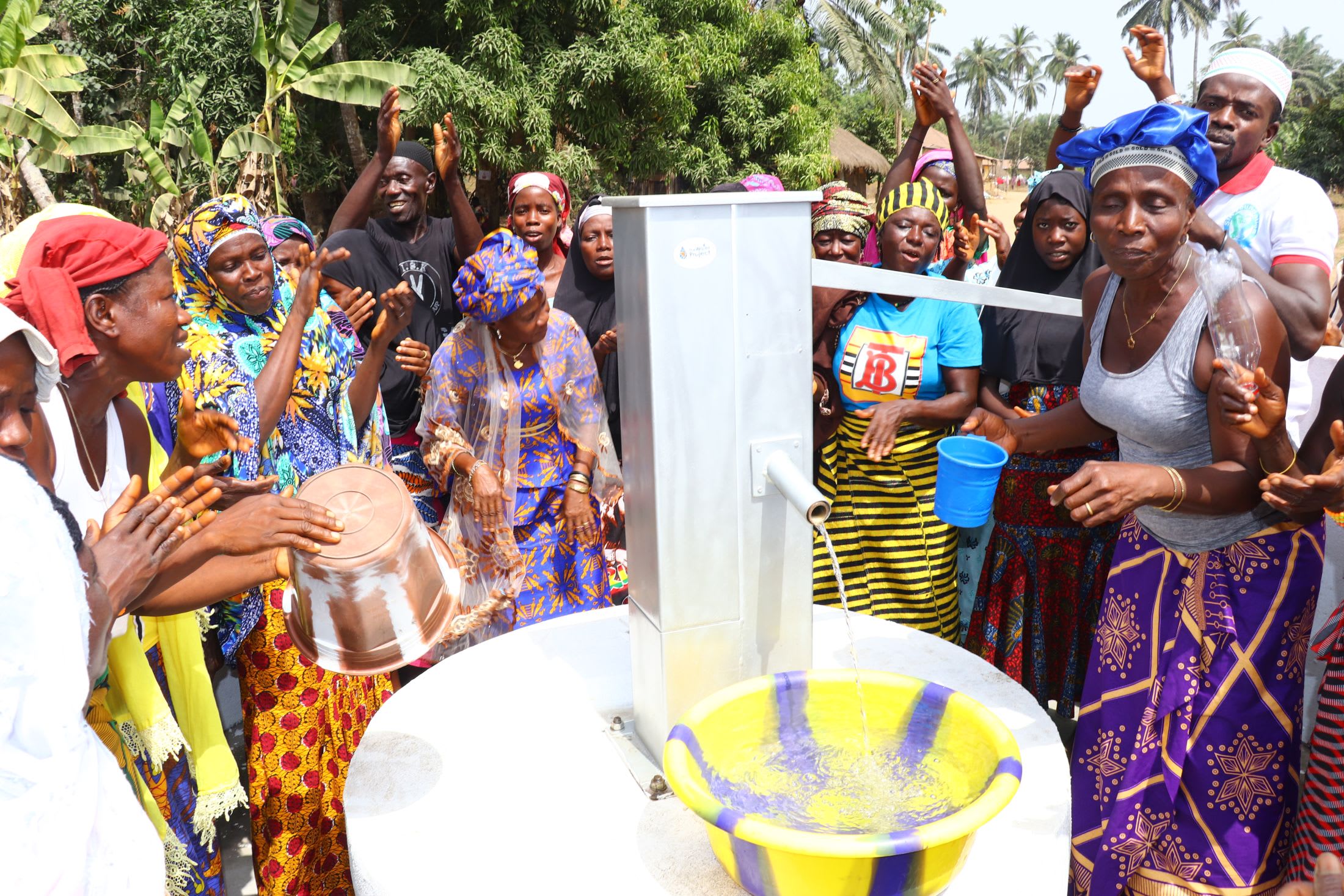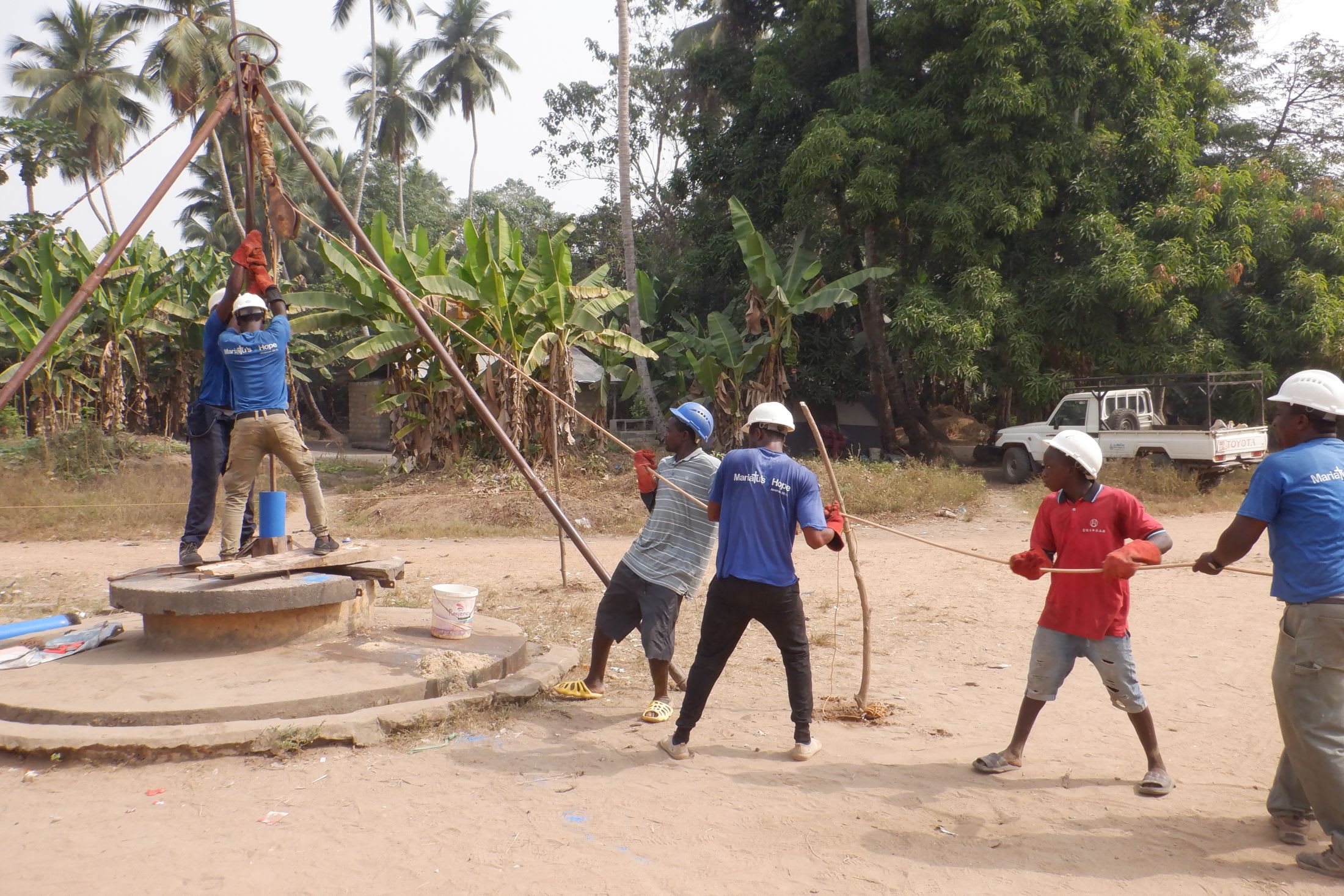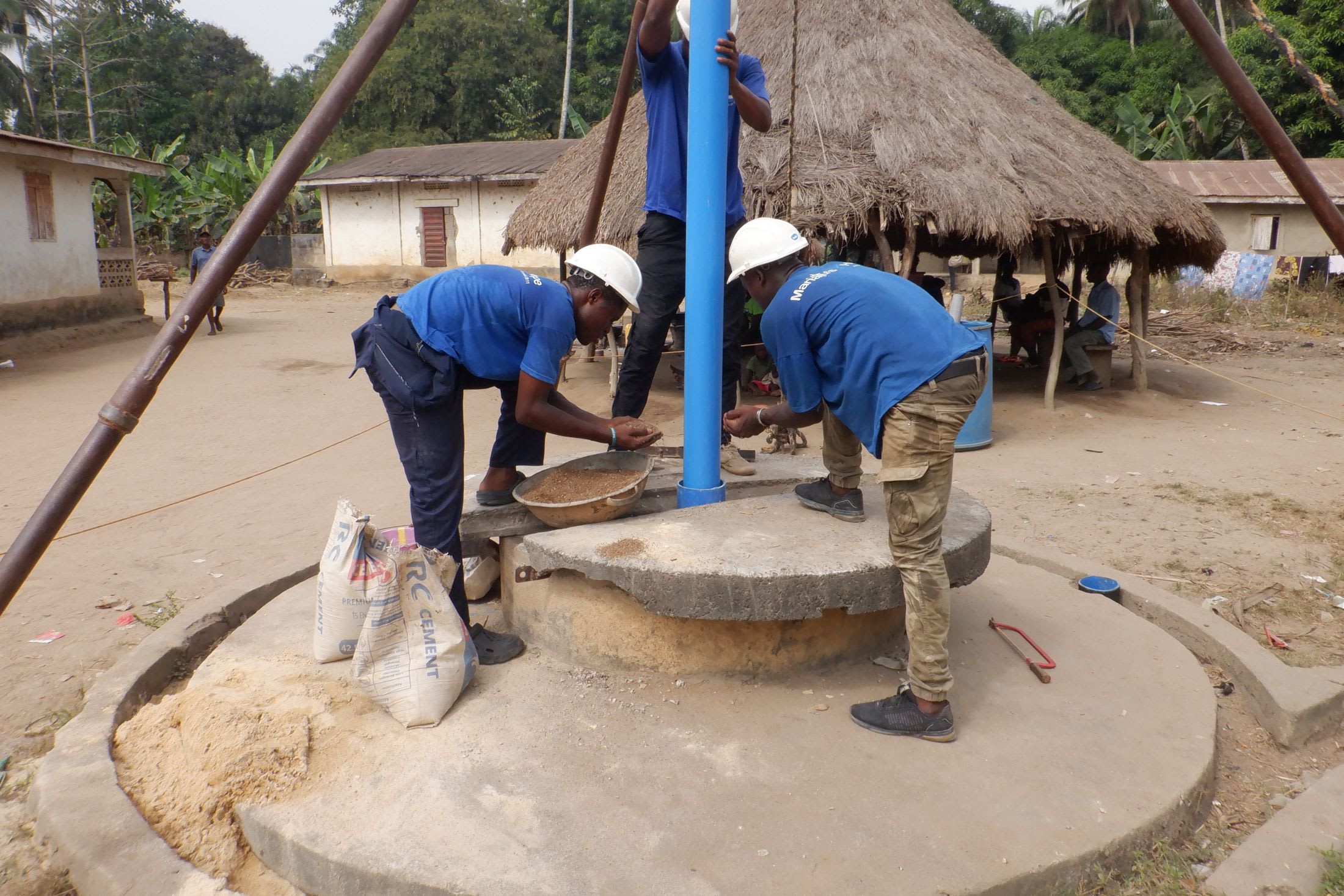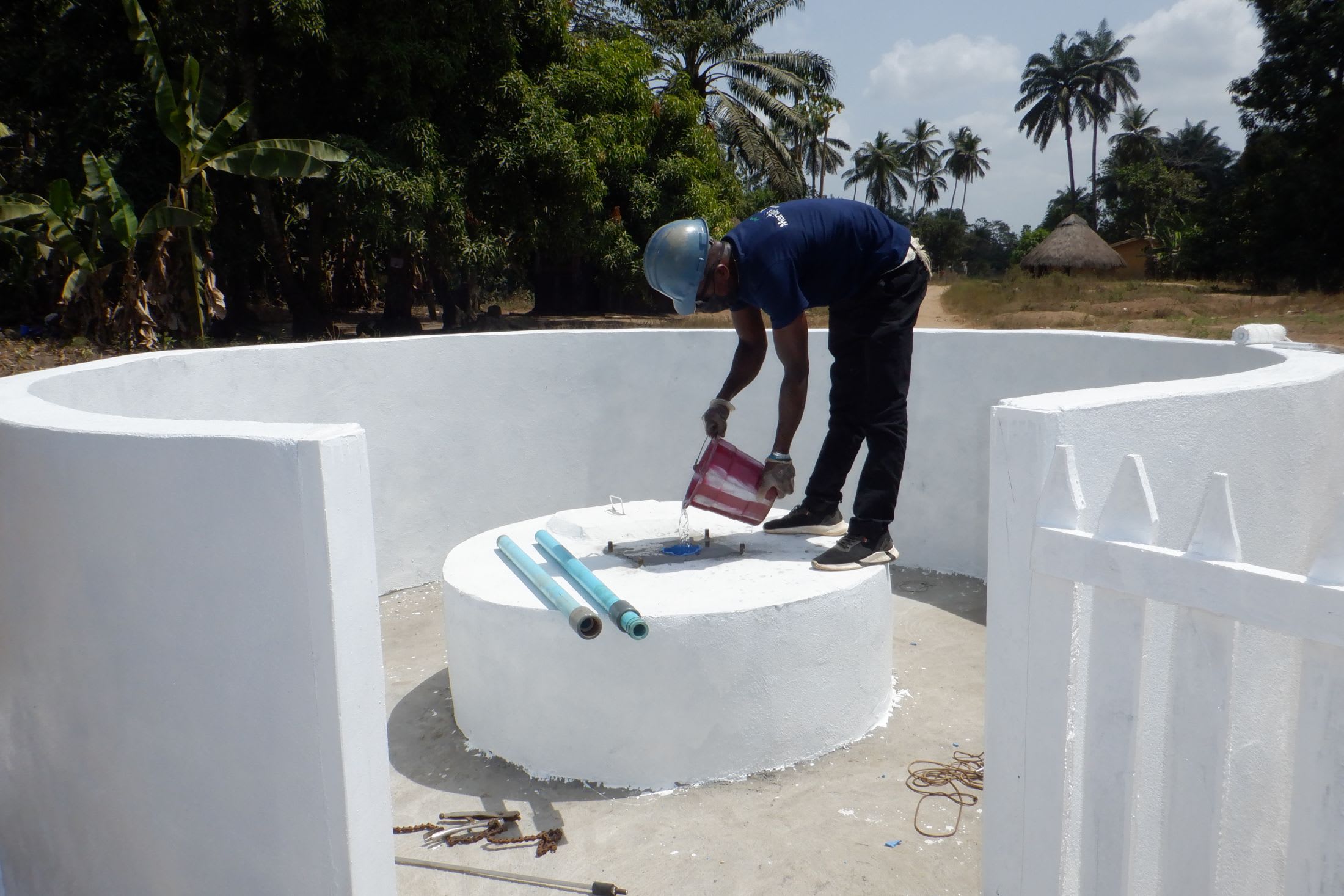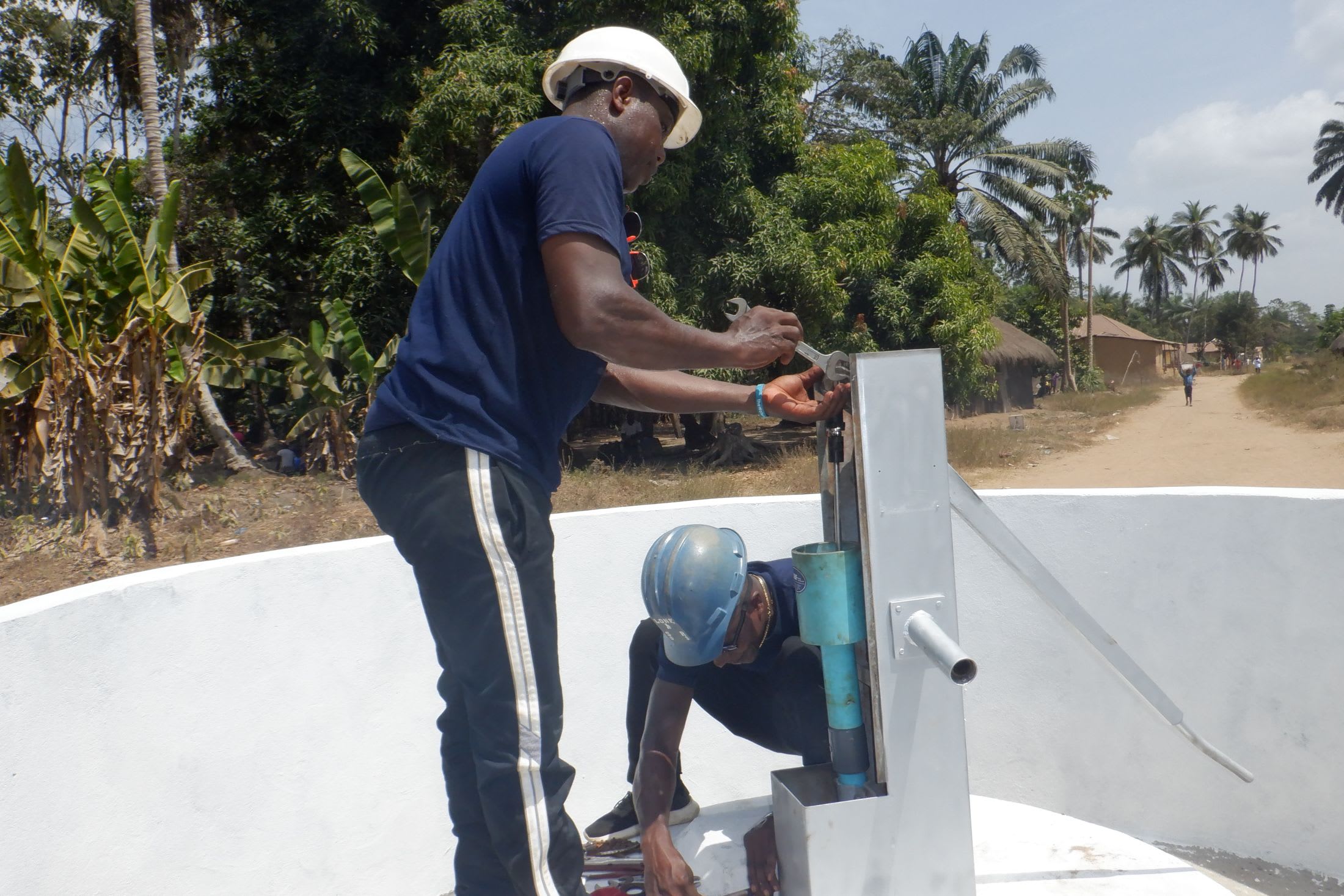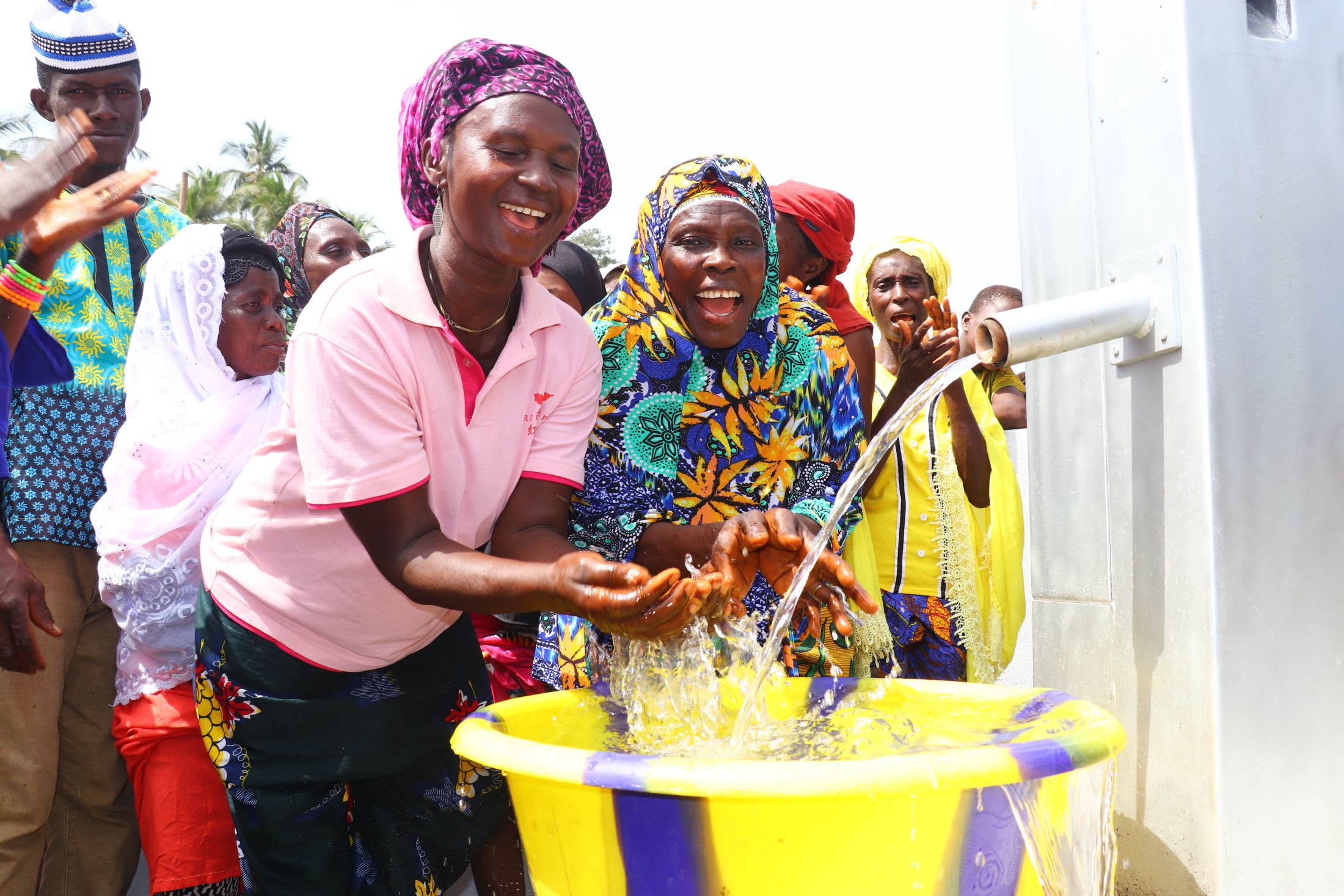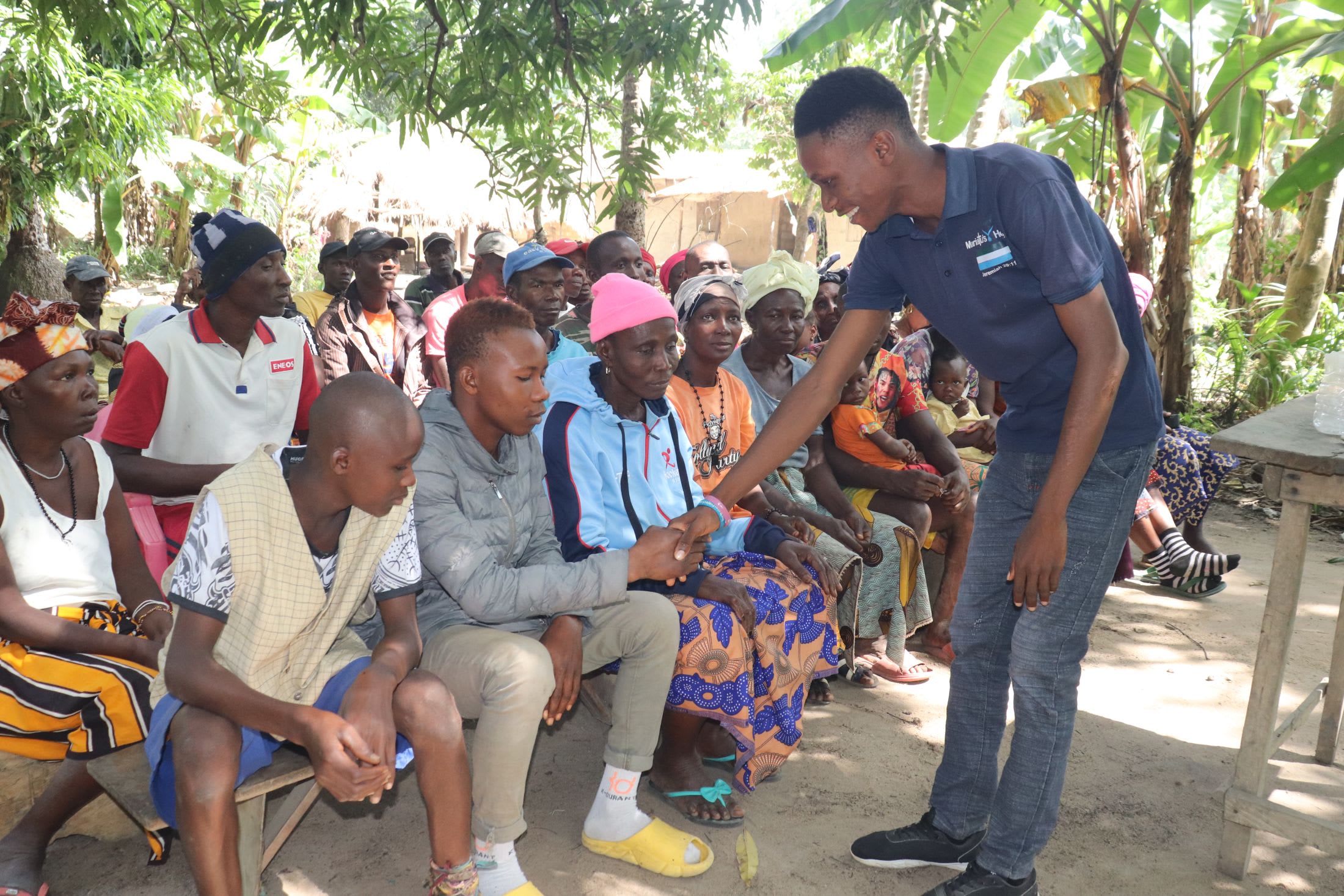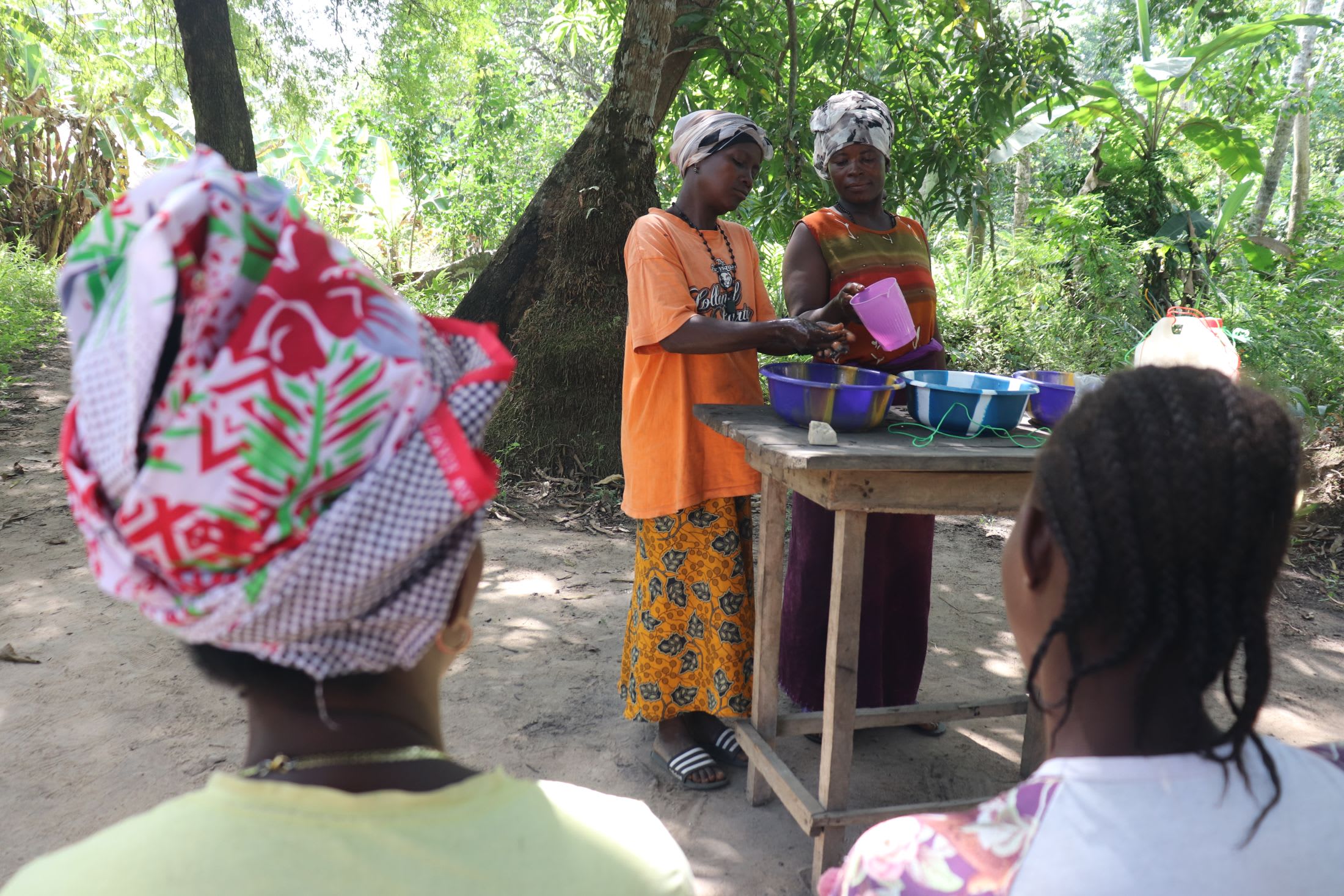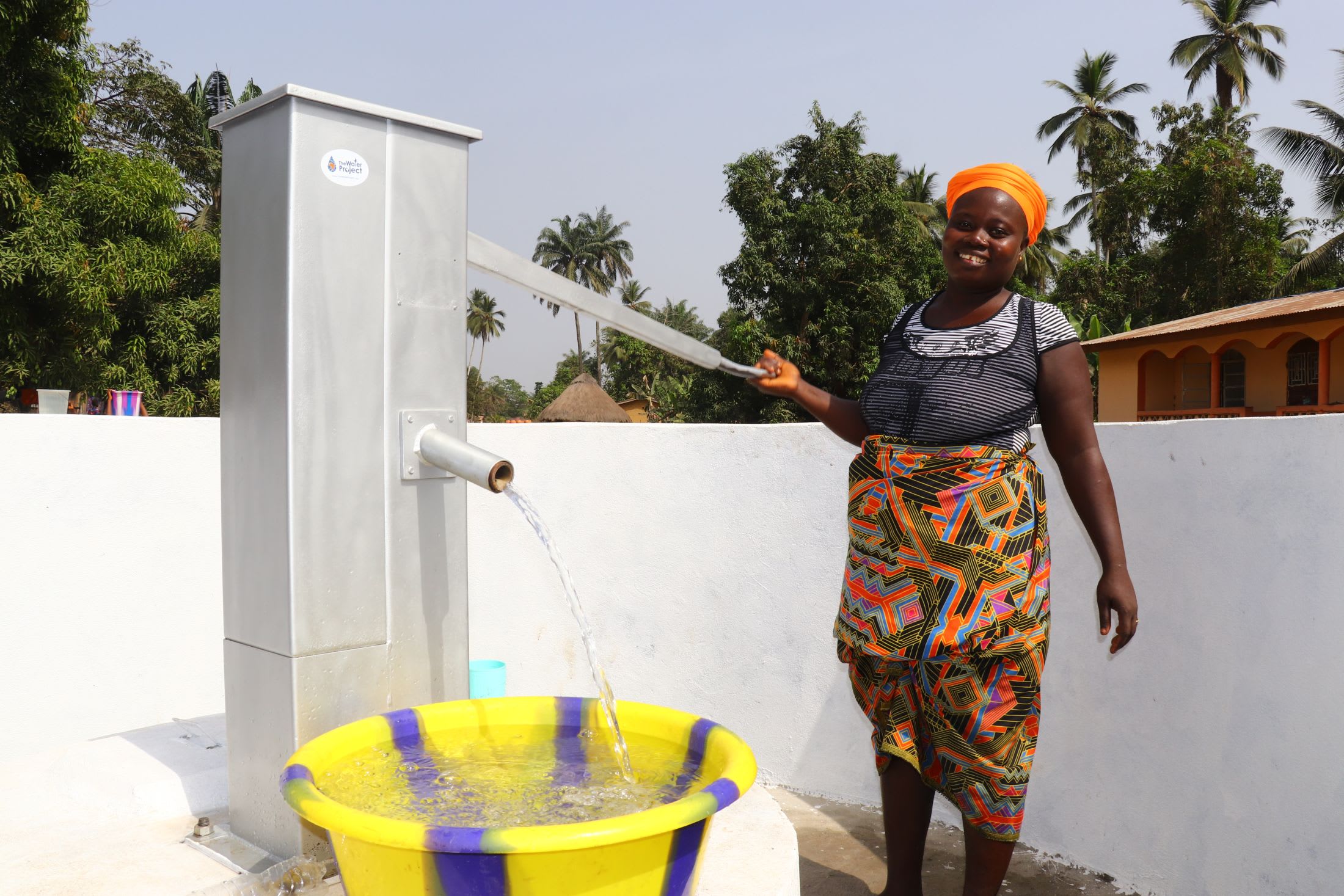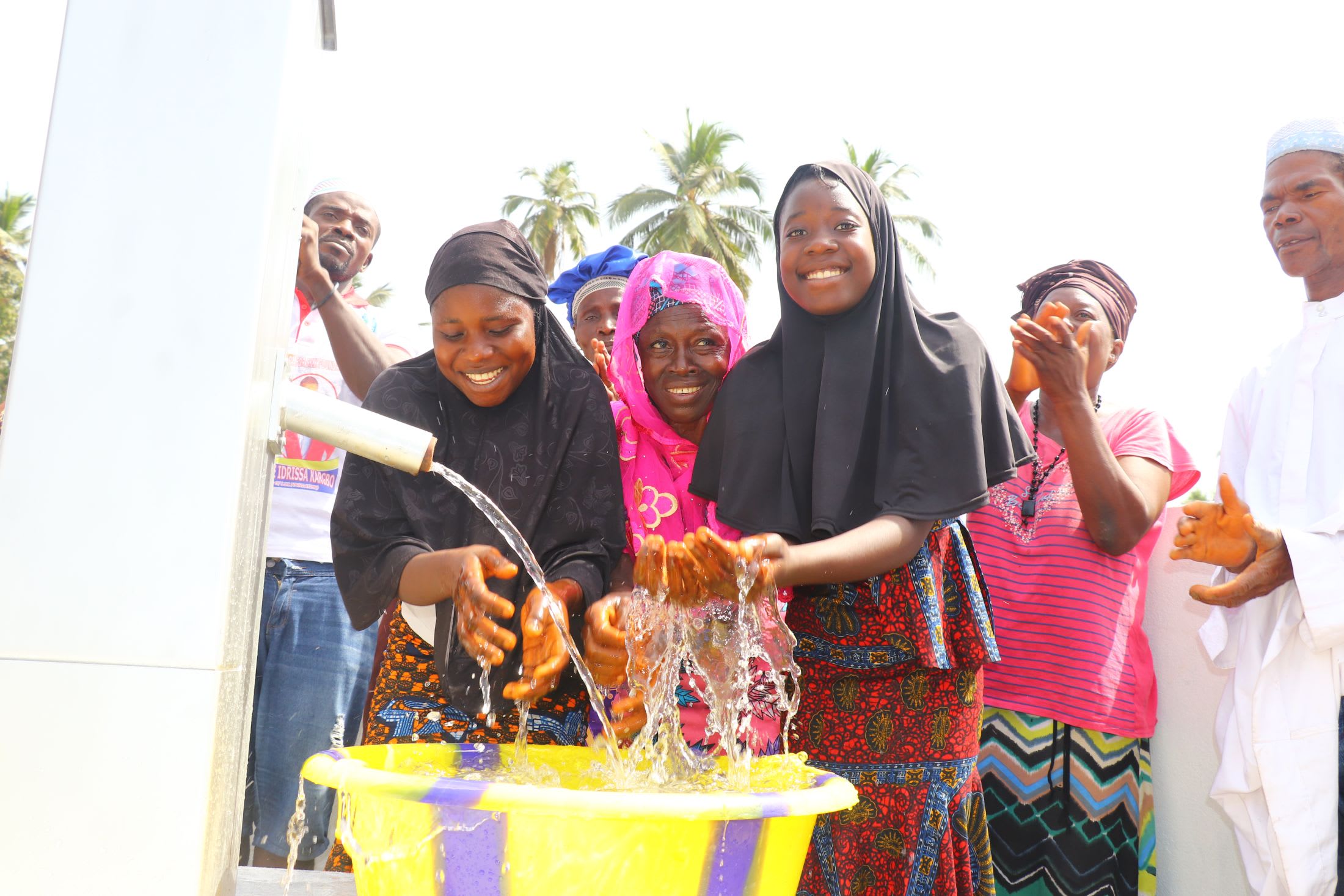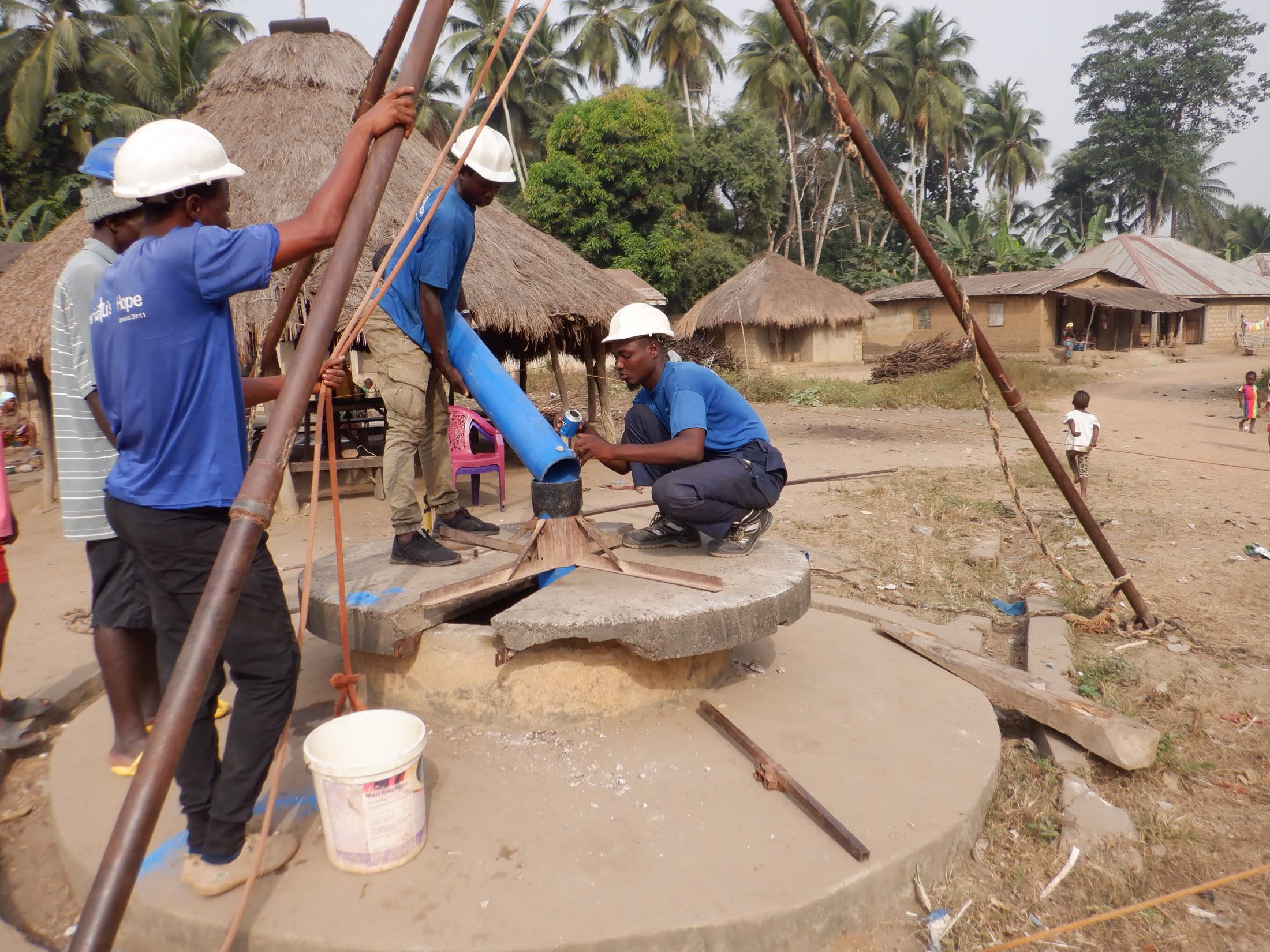The 410 people of Kathoma Community struggle to access sufficient water. Their large population overuses their well, causing long lines, low water, and a pump that is often broken. Without access to enough safe water, life in Kathoma is challenging, to say the least.
Waiting in long lines at the overcrowded well causes delays in all parts of this community's life. Most members are farmers, so any time not used to invest in their livelihood is resources taken from their families, which are already meager. Due to the lack of water, community members committed to Islam cannot perform ablution, a practice central to their religious beliefs.
Field Officer Alie Kamara shared his perspective. "There is always tension at the water point, which causes quarrels among the community members, leading to disarray in the community. Waiting for too long at the water point consumes more energy; [in] the end, the community members will return home with little water. Children always complain of joint pain and back pain after making many trips. Walking far distances to access water causes the community members to get fatigued, which results in not being active in other activities. Most households are left not having food on time, and most times, the kids usually cry for food."
35-year-old trader Aminata Kamara, seen below, shared how the devastating state of their community has affected her. "During the dry season, I suffer a lot because the pump is not producing enough water. At that time, many people were at the water point waiting to fetch water. Most times, my children [are] late for school. In the evenings, I must prepare food for my family, but the water problem does not allow me to cook on time, so my family and I eat late. Sometimes, I do not bathe my kids every day."
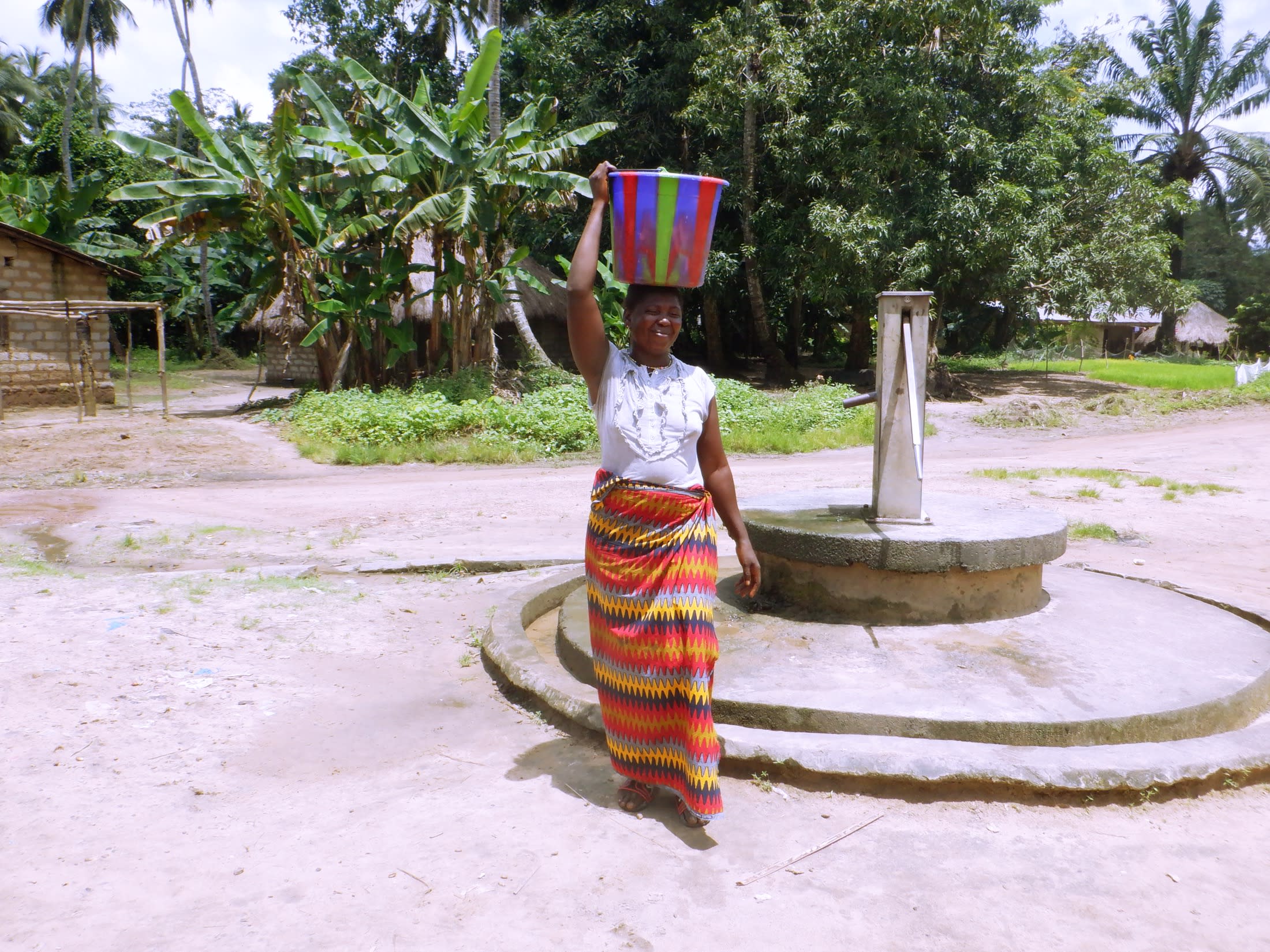
Being unable to complete daily tasks or attend school on time is extremely detrimental to both child and community development.
12-year-old Fatmata K., seen below at the stream, shared, "I am facing serious water problems in this community. Early in the morning, I must do all my housework before going to school. Sometimes, I am late for school, and my teacher always flogs me for being late.

To make matters worse, when the well runs dry, community members are forced to travel a long distance to a stream to collect water. The water collected there is contaminated and often makes people ill.
"The distance from my house to the water point is very far away. The stream water is not safe to drink [or] do other domestic activities. Snakes reside in the stream water, so I usually see snakes. I am always afraid to get drowned in the stream. Fetching water from the pump as well as the stream is a big problem for me. The pump gets overcrowded, and the stream water is not good for drinking. After making many trips a day, I will be tired and not active in other housework, which results in me going to bed early," continued Fatmata.
"Due to the water crisis in my village, I am mostly late for prayers as well [to] do business. During the dry season, when the pump gets dry or breaks down, I find it difficult to fetch water. The only water available is in the stream, but it is far from my house. I must walk [a] far distance to fetch water from the stream. I am facing a lot of problems fetching water; most times, I see snakes in the water," Aminata (seen below) said, echoing the concerns of Fatmata.

These are common problems in the whole community of Kathoma. They risk their safety and health by fetching water from the distant stream, and both water options waste too much of their valuable time.
Rehabilitating the well, we drill deeper into the Earth to ensure it no longer runs dry. We will also install a new pump and replace the surrounding cement pad. This gives the well better output, which will, in turn, reduce waiting times and hopefully ensure the Kathoma community no longer uses the contaminated water from the distant stream.
Rehabilitating the Kathoma Community well will enable adults like Aminata to prioritize their time to help provide for their children. Hopefully, those same children and others like Fatmata can go to school and eat on time with water access, giving the community as a whole a chance at a brighter future.
The Proposed Solution, Determined Together...
At The Water Project, everyone has a part in conversations and solutions. We operate in transparency, believing it benefits everyone. We expect reliability from one another as well as our water solutions. Everyone involved makes this possible through hard work and dedication.
In a joint discovery process, community members determine their most advantageous water solution alongside our technical experts. Read more specifics about this solution on the What We're Building tab of this project page. Then, community members lend their support by collecting needed construction materials (sometimes for months ahead of time!), providing labor alongside our artisans, sheltering and feeding the builders, and supplying additional resources.
Water Access for Everyone
This water project is one piece in a large puzzle. In Kenya, Sierra Leone, and Uganda, we're working toward complete coverage of reliable, maintained water sources that guarantee public access now and in the future within a 30-minute round trip for each community, household, school, and health center. One day, we hope to report that this has been achieved!
Training on Health, Hygiene & More
With the community's input, we've identified topics where training will increase positive health outcomes at personal, household, and community levels. We'll coordinate with them to find the best training date. Some examples of what we train communities on are:
- Improved hygiene, health, and sanitation habits
- Safe water handling, storage & treatment
- Disease prevention and proper handwashing
- Income-generation
- Community leadership, governance, & election of a water committee
- Operation and maintenance of the water point
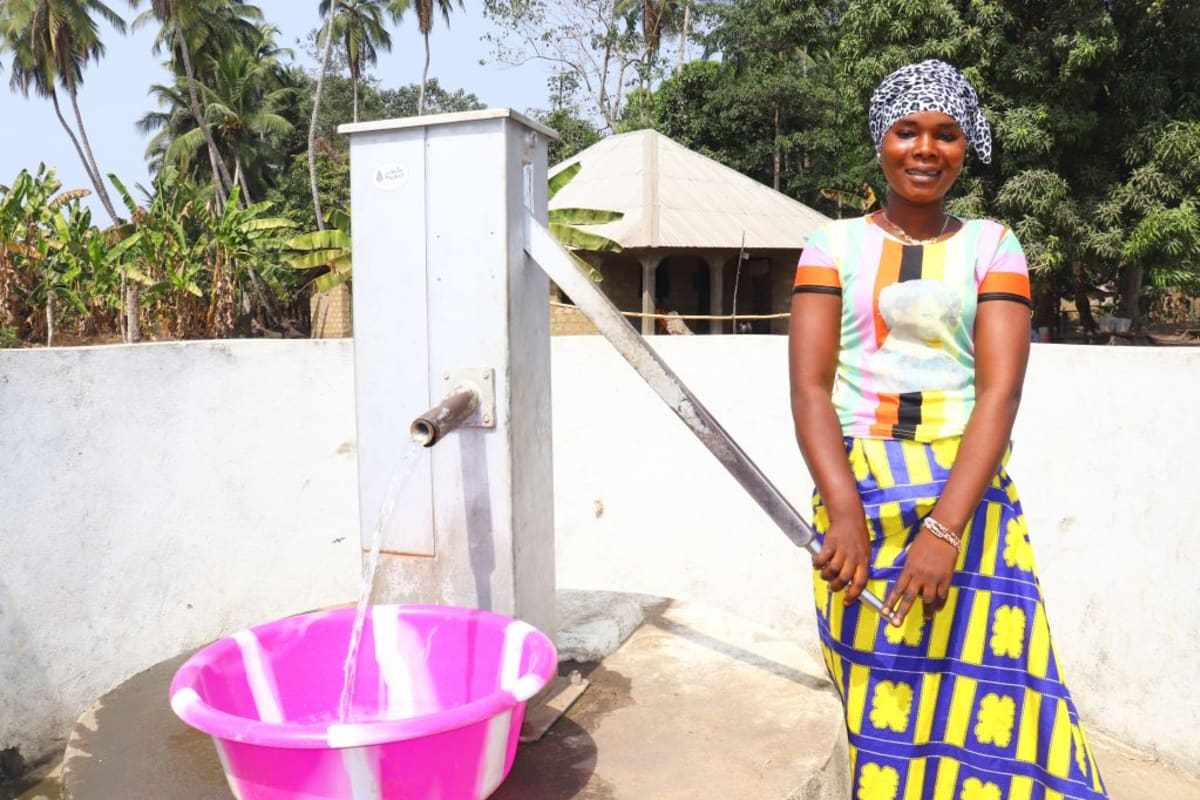


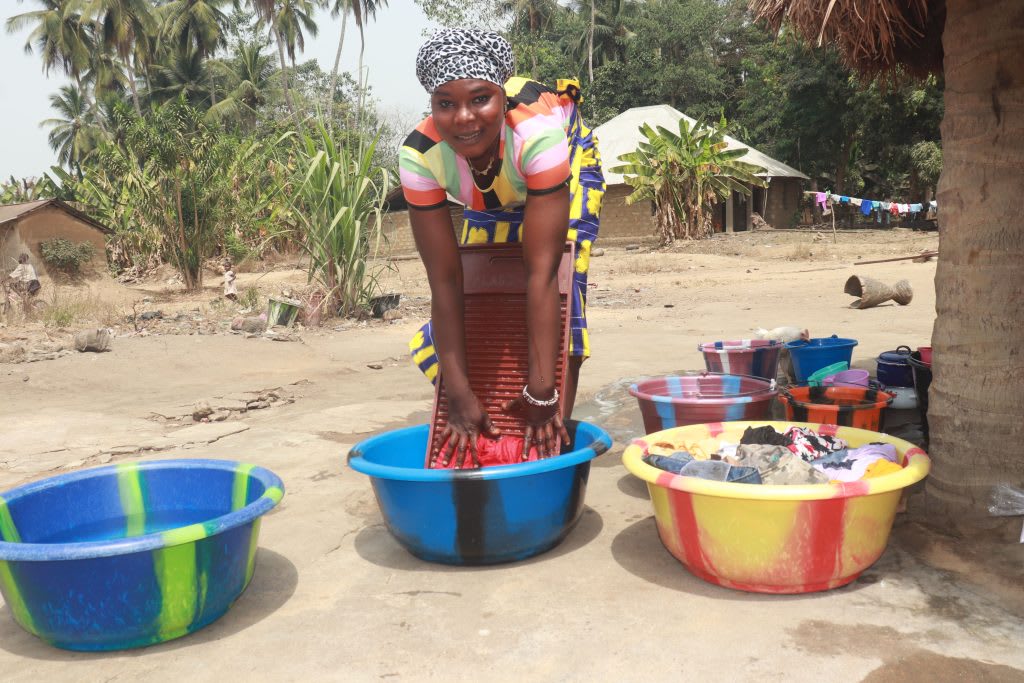

 Borehole Well and Hand Pump
Borehole Well and Hand Pump









